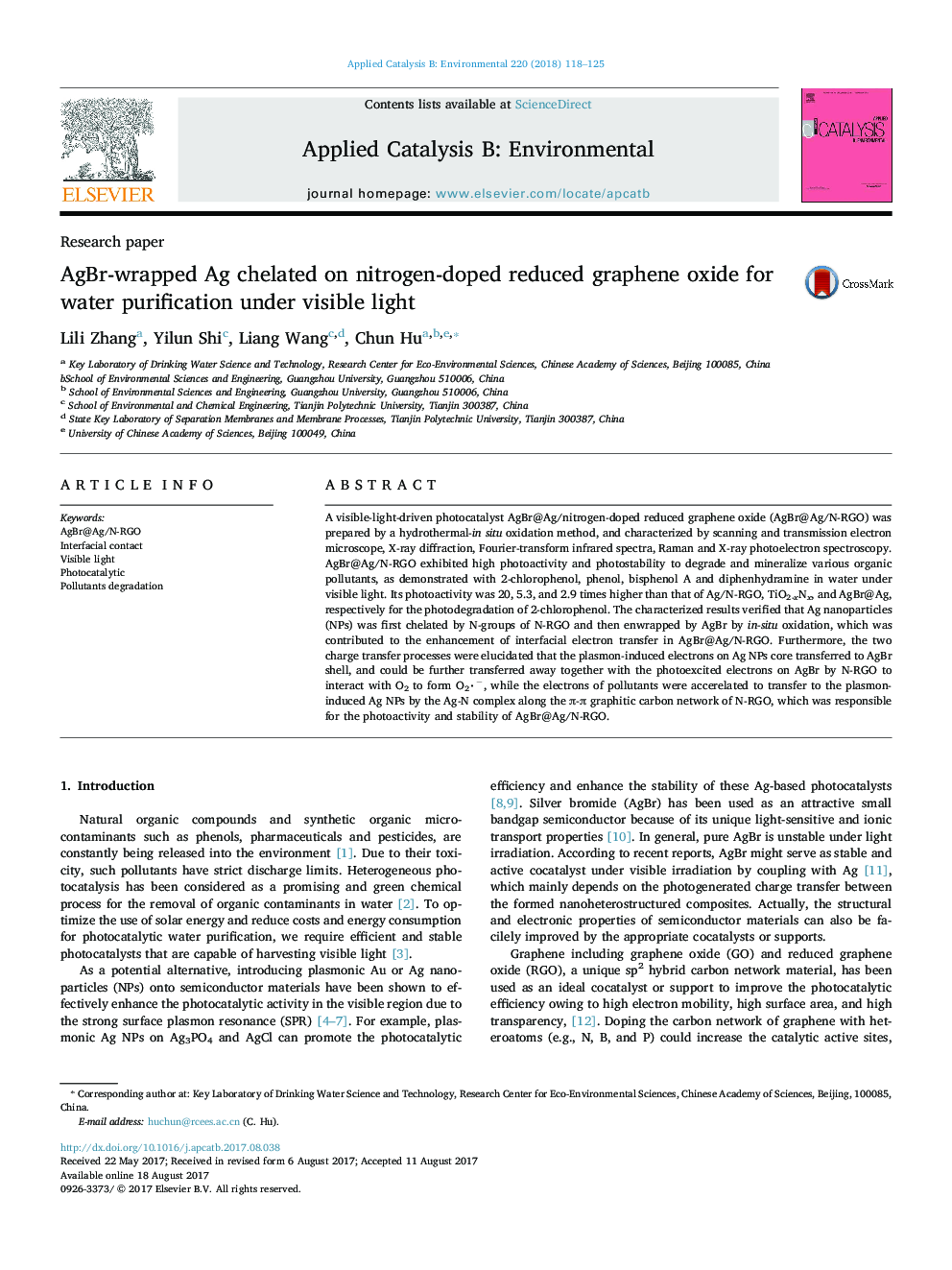| Article ID | Journal | Published Year | Pages | File Type |
|---|---|---|---|---|
| 6453558 | Applied Catalysis B: Environmental | 2018 | 8 Pages |
â¢AgBr-wrapped Ag dispersedly anchored on N-doped RGO was fabricated.â¢AgBr@Ag-N-RGO was highly effective and stable for pollutants removal under visible light.â¢The good interfacial contact enhanced effective electron separation and transfer.â¢The electron transfer process was confirmed from Ag to AgBr and from pollutants to Ag by N-RGO.
A visible-light-driven photocatalyst AgBr@Ag/nitrogen-doped reduced graphene oxide (AgBr@Ag/N-RGO) was prepared by a hydrothermal-in situ oxidation method, and characterized by scanning and transmission electron microscope, X-ray diffraction, Fourier-transform infrared spectra, Raman and X-ray photoelectron spectroscopy. AgBr@Ag/N-RGO exhibited high photoactivity and photostability to degrade and mineralize various organic pollutants, as demonstrated with 2-chlorophenol, phenol, bisphenol A and diphenhydramine in water under visible light. Its photoactivity was 20, 5.3, and 2.9 times higher than that of Ag/N-RGO, TiO2-xNx, and AgBr@Ag, respectively for the photodegradation of 2-chlorophenol. The characterized results verified that Ag nanoparticles (NPs) was first chelated by N-groups of N-RGO and then enwrapped by AgBr by in-situ oxidation, which was contributed to the enhancement of interfacial electron transfer in AgBr@Ag/N-RGO. Furthermore, the two charge transfer processes were elucidated that the plasmon-induced electrons on Ag NPs core transferred to AgBr shell, and could be further transferred away together with the photoexcited electrons on AgBr by N-RGO to interact with O2 to form O2â, while the electrons of pollutants were accerelated to transfer to the plasmon-induced Ag NPs by the Ag-N complex along the Ï-Ï graphitic carbon network of N-RGO, which was responsible for the photoactivity and stability of AgBr@Ag/N-RGO.
Graphical abstractDownload high-res image (134KB)Download full-size image
